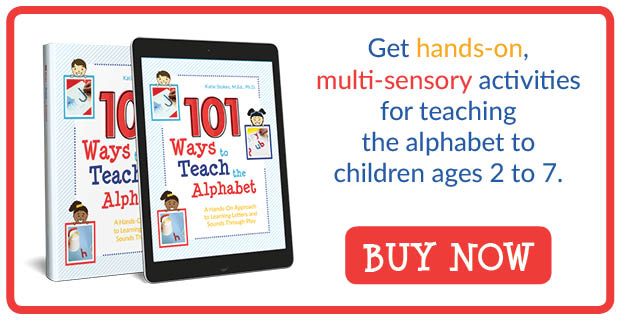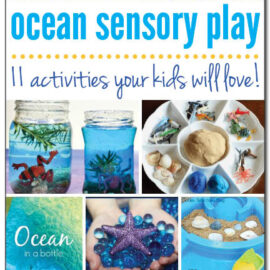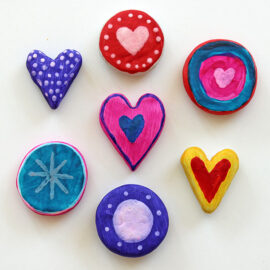This post may contain affiliate ads at no cost to you. See my disclosures for more information.
In order to learn the alphabet, children need to be able to recognize the shapes of all the letters. This requires them to attend to the physical characteristics of each letter, including whether the letter has straight or curvy lines.
In this week’s installment of my 101 Ways to Teach the Alphabet Series, I am sharing three sorting activities that helps kids focus on various physical characteristics of the letters.
As children pay more and more attention to these physical characteristics, their ability to recognize and identify the letters of the alphabet will increase.
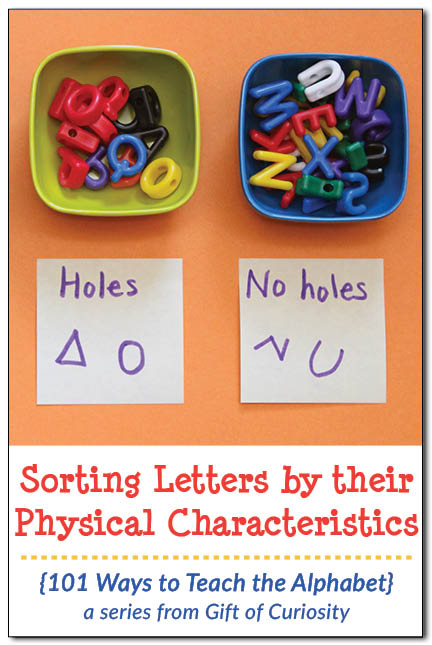
Letter characteristics for beginning learners
The first two activities below are good ones to do with kids who can distinguish between different shapes but do not yet recognize many letters.
1. Sorting letters with straight and curvy lines
One simple characteristic you can draw your child’s attention to is the kind of lines the letter is made of. Some letters are written using straight lines (e.g., M, L, Z), others are written using curvy lines (e.g., S, C, O), and others have both straight and curvy lines.
You can set up a sorting activity to help your child examine the letters and determine whether they have straight or curvy lines.
I placed a handful of uppercase letter beads (although this activity can be done with uppercase or lowercase letters) into a bowl on the left side of the image below. Next to the bowl I placed two smaller containers with illustrated labels that said “straight” and “curvy.”
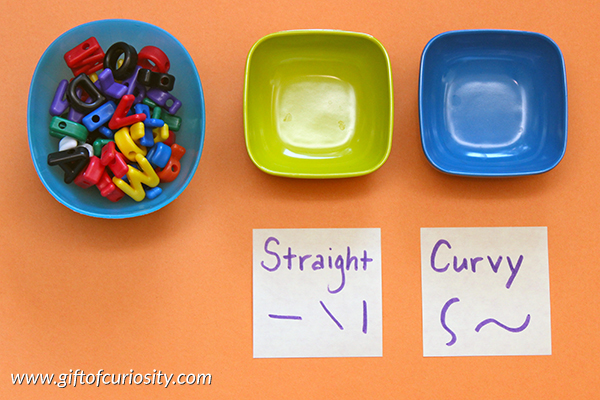
Invite your child to select a letter from the big bowl, look at its lines, and then place it into the correct container.
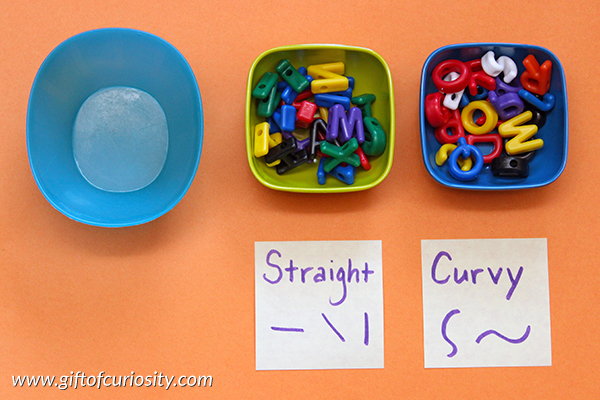
2. Sorting letters with holes and no holes
Aside from sorting letters based on whether they have straight or curvy lines, your child can also sort letters based on whether they have holes or no holes. For example, ‘A’ and ‘O’ both make closed shapes that have holes – a triangle for the ‘A’ and a circle for the ‘O’ – but ‘W’ and ‘U’ do not have closed shapes with holes.
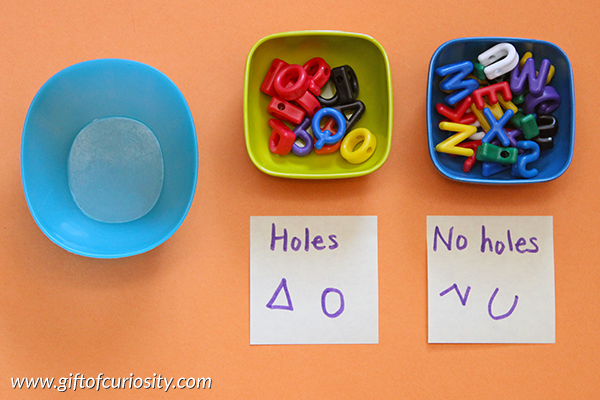
Letter characteristics for more advanced learners
The third activity, shown below, is good for kids who know the proper orientation for each letter (i.e., which part of each letter is at the top and which part is at the bottom).
Children do not need to know letter names or sounds to do this activity, although it is likely that many children will already know some of the letter sounds and names if they recognize which part of the letter is the top.
3. Sorting letters with ascenders and descenders
Your child can sort letters depending on whether they have an ascender or a descender.
An ascender is the part of a lowercase letters that rises above the height of the ‘x.’ In contrast, a descender is the part of a lowercase letter that extends below the baseline of a font.
Letters with ascenders include:
b, d, f, h, i (sort of), k, l, t
Letters with descenders include:
g, j, p, q, y
(Note that only lowercase letters have ascenders and descenders. Uppercase letters do not have ascenders or descenders as all uppercase letters are the same height.)
I set up this activity so my kids could sort letters with ascenders and descenders. I used a handful of lowercase letter beads as the sorting material.
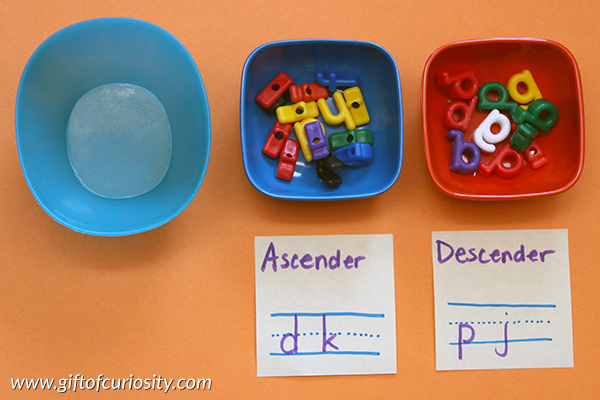
If your child is ready, you can have them sort letters with ascenders, descenders, and letters with no ascender or descender into three different groups.
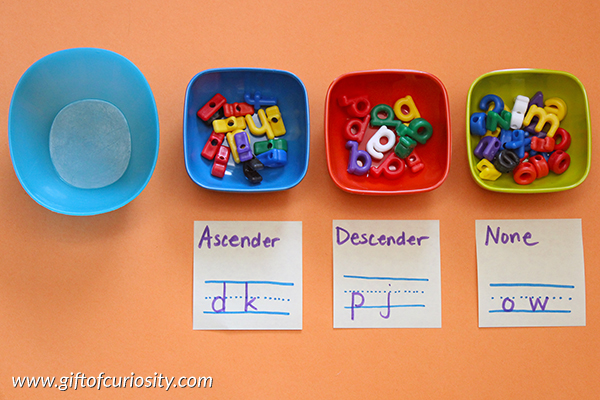
How to follow up after your child has finished sorting
With any of these sorting activities, once your child has sorted the letters you may wish to pull some of of the small containers and look at them.
Admire the characteristics of the letter. Say things like, “Oh yes, look at how these lines are so curvy!,” or “Good job seeing how this letter is tall and has an ascender.”
As you look at each letter, say its sound to reinforce the letter sounds for your child, “This letter here says zzz.”
Are there other physical characteristics kids can sort on? Let me know if I left something out!
More ways to teach to the alphabet
More alphabet posts from Gift of Curiosity:
- Crystallized letters
- Letter hunt sensory bin
- Erasing letters with a Q-tip
- Making letters with straws and play dough
- I spy letter hunt
- Spaghetti letters
- Letter puzzles
- Montessori sandpaper letters
- Letter creatures
- Smash the puffy letters
- Mini letter hunt with a magnifying glass
You can find more ways to teach the alphabet on my Literacy Activities for Kids page and my Letter Learning Pinterest board.

